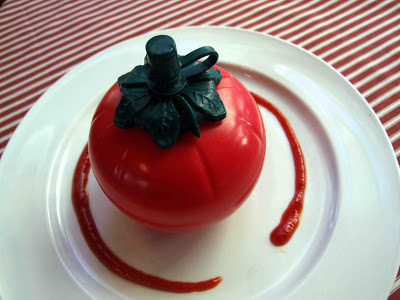Sauces. You probably don’t even think about them as you add them to your meal for a ‘dash’ of flavour. But have you ever stopped to think about where that flavour comes from?
Remember this stuff is designed to sit on your shelf for months. Fresh food generally tastes better than food that has been sitting around in a jar or tin. Try it and see if you don’t believe us. No wait, don’t you’ll probably poison yourself.
We expect to be able to go to the supermarket and buy sauces that taste just as good as we can make at home. But there is no way it can taste as good – at least not with the same ingredients. Sugar and salt are the answer: they taste great so they can be used to provide and enhance flavour when there isn’t much there. They can even be used to block unpleasant flavours, such as when food goes bad. And when a lot of sugar or salt has to be used for some reason, the other can be used to moderate the taste. Best of all sugar and salt are both preservatives, ‘natural’ ones at that. So a food can be stacked full of sugar and salt and it will last for months – but no artificial preservatives! Sugar and salt are the ultimate tag-team combination for sauce manufacturers.
That is why, despite making up a tiny proportion of our food intake (around 1.4% of our energy), sauces actually make up a big chunk of our sugar and salt intake. We get around 2.3% of our sugar from sauces, and for young people this is higher at 3%. And the average Kiwi gets a whopping 6% of their salt intake from sauces. Considering we eat about 50% more salt than we should, every little counts.
The greatest contributor to this is probably our old mate tomato sauce. Watties tomato sauce is almost 1/3 sugar, and has a whopping 1g of sodium (the bad bit of salt) in every 100g. And they have gall to advertise it as 99% fat free and a source of lycopene (an antioxidant). If you ate enough to get your share of lycopene your arteries would probably harden from all the salt.
However tomato sauce is by no means the worst thing on the market. That title probably goes to sweet chilli sauce, which is two-thirds sugar and has 1,620mg of sodium per 100g. Of course if you have a savoury tooth you might be more worried about soy sauce, with over 5,000mg of sodium per 100g. About 40g of soy sauce contains all the salt you should consume in a day.
But you probably know about these sauces. You may have even considered the fact that this stuff is adding unnecessary sugar and salt to your kid’s Spaghetti and Baked Beans. You might even know that Heinz mayonnaise is 74% fat, with 815mg of sodium per 100g, so will be conscious of how much you put on your coleslaw. But have you noticed how much sugar and salt is in ready to eat sauces?
Our busy lifestyles have put the squeeze on food preparation time, so if we do have to go anywhere near a saucepan, we want the pasta sauce ready to heat. Adult Kiwis spend an average of 46 minutes each day on food preparation and clean-up, two minutes less than 10 years ago.[i] However, ready to eat food carries the same downsides as we saw above. To have food that sits on the shelf for months and still tastes good, it has to be loaded with sugar and salt.
Dolmio Classic pasta sauce is around 9% sugar and 0.5% sodium. That isn’t quite as bad as tomato sauce, but then you are eating it in far greater quantities than tomato sauce too. A 500g pot of pasta sauce has 11 teaspoons of sugar in it and more than a teaspoon of salt. There is no way that you would put that much in your home made pasta sauce.
And this is by no means the worst ready-made sauce on offer. Sweet and Sour Chicken Tonight was a whopping 23% sugar – the equivalent of almost 30 teaspoons in each jar. It doesn’t matter what celebrity chef has his name on the jar (Jamie Oliver, you should be ashamed) any jar of ready made sauce will contain more sugar and salt than you would add if you were cooking at home. Such is the downside of cheap, convenient fake food.

